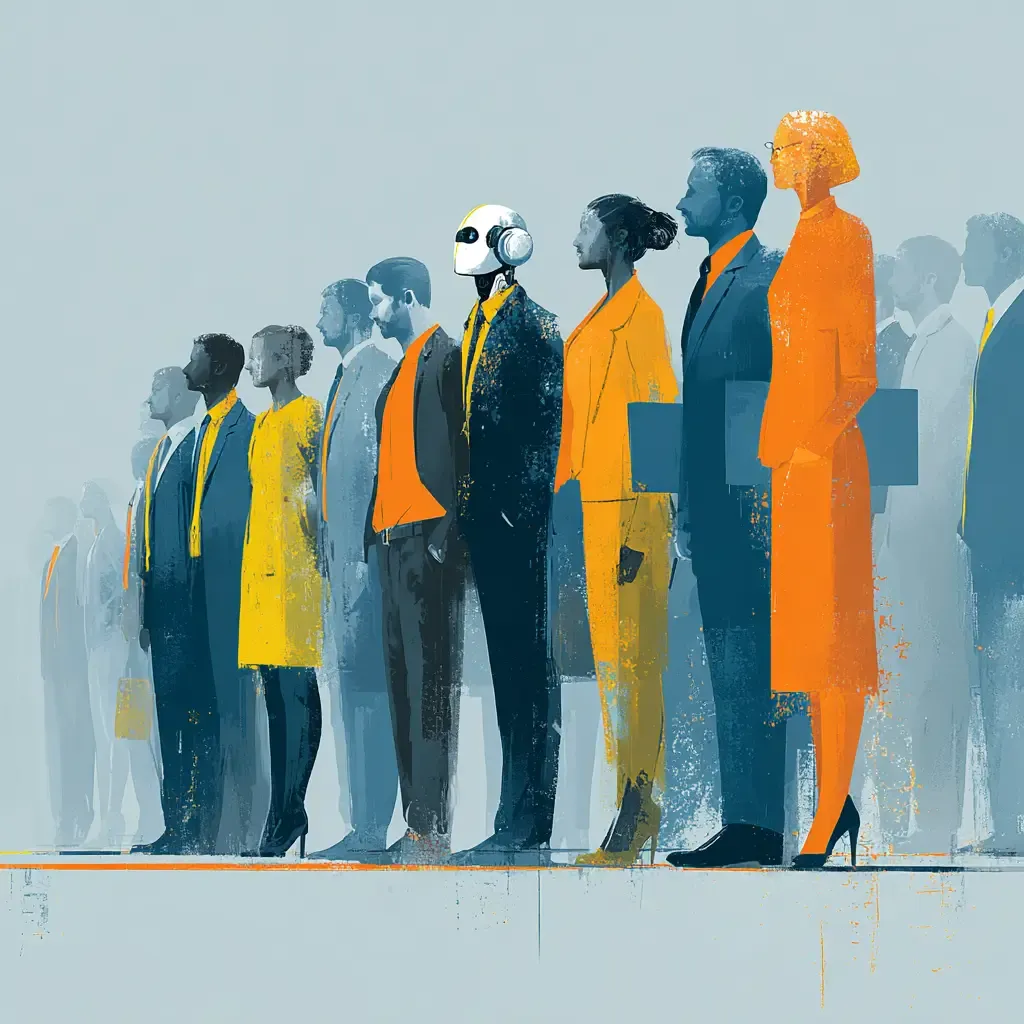Let’s start here: the people you support are already using AI at work.
They’re feeding confidential data into ChatGPT. They’re copying meeting transcripts into Claude. They’re using GitHub Copilot, Notion AI, Grammarly, and a dozen browser extensions to save time, look smarter, and keep up. They’re not waiting for a steering committee. They’re not asking for approval.
They’re just doing what knowledge workers do best—finding better ways to get things done.
Welcome to the rise of Shadow AI.
What is Shadow AI?
If “Shadow IT” referred to unsanctioned tools and platforms introduced into corporate ecosystems by well-meaning employees, then Shadow AI is its smarter, faster, and infinitely more unpredictable cousin.
It’s the quiet adoption of AI tools at the edge of the enterprise—by product managers, analysts, HR generalists, and frontline supervisors—without governance, without guidelines, and without a change management plan in sight.
Gartner, Forrester, and McKinsey are already writing about it. CIOs are worried. Risk officers are circling. But most orgs are still moving slowly—drafting policies, forming task forces, hosting lunch-and-learns—while the tools spread like wildfire.
And here’s the kicker: most change practitioners aren’t even in the room.
Why Shadow AI Should Be on Your Radar
Let’s spell it out clearly:
Shadow AI is the most untracked, untrained, and ungoverned change program in your organization.
It’s not just about risk. It’s about culture. Productivity. Trust. Learning. Burnout. Decision-making. Talent development. Equity. Data security. Ethics. Communication.
In other words: it’s about everything we’re supposed to be helping with.
AI isn’t just a new technology. It’s a behavior-shaping force. It changes how people work, think, and interact. If you’re a change practitioner and you’re not tracking how AI is showing up in your workplace, you’re flying blind.
Three Things to Start Doing Now
Here’s what you can do even if your org doesn’t have an AI roadmap (yet):
1. Ask the Uncomfortable Questions
- What AI tools are your teams already using?
- What use cases are bubbling up in Slack, Notion, or team meetings?
- Who’s quietly building AI into their workflows?
You don’t need a formal survey—start with conversations.
2. Document the Shadow
Create a lightweight “AI Use Map” across your teams or business units. Capture:
- Tool name
- How it's used
- Whether it's free/personal/pro version
- Whether it's integrated with corporate data
This isn’t surveillance. It’s pattern recognition.
3. Build the Behavior Framework Before the Tech Policy
Compliance will come. Legal reviews will catch up. But you can help teams:
- Think through good prompting hygiene
- Use AI responsibly with customer data
- Spot hallucinations or bias
- Share learnings and use cases across silos
Don’t wait for the top-down mandate. Lead from the edge.
What To Do Instead of Waiting
If you’ve ever said, “Change management should be involved earlier,” this is your shot. This is your moment to show up not just as the comms person or the training lead—but as the strategic guide helping shape how work evolves.
Start by:
- Partnering with IT or Innovation to host internal AI office hours
- Co-creating a “human + AI” charter with key teams
- Pitching a lightweight pilot to model responsible rollout
Don’t be the last function to engage with AI. Be the first to help people use it well.
Final Thought
Shadow AI is not a phase. It’s the leading edge of how work is changing, quietly, beneath the surface.
If you want to stay relevant in your organization, you can’t wait for permission to engage. You have to do what your best employees are already doing—act now, ask smarter questions, and build better practices before the system catches up.
This is your terrain. Go stake a claim.
ChangeGuild: Power to the Practitioner™
Frequently Asked Questions
What is Shadow AI?
Shadow AI refers to the use of AI tools within an organization without formal approval, oversight, or integration with enterprise systems. It often arises when individuals or teams adopt free or low-cost AI tools to increase productivity, bypassing security, compliance, or governance processes.
Why is Shadow AI a problem for organizations?
Shadow AI can lead to data privacy violations, IP leakage, inconsistent results, and risk exposure—especially when confidential or regulated data is involved. It also undermines centralized efforts to implement secure, scalable AI solutions across the enterprise.
How can change practitioners address Shadow AI?
Change practitioners can partner with security, legal, and innovation teams to establish clear AI usage guidelines, educate teams on acceptable use, and co-design safe channels for experimentation and feedback—balancing innovation with control.
Is all AI experimentation considered Shadow AI?
No. Experimentation becomes Shadow AI when it happens outside governance structures. When done transparently within guardrails—like pilot programs or sanctioned sandboxes—it’s part of responsible innovation.
Recommended Reading
If you enjoyed this article, you might also find these helpful:


You’ve seen the signs. Now it’s time to lead the shift.
Shadow AI isn’t waiting for your next strategy session. If you’re seeing ungoverned tools, unclear norms, or rising anxiety around AI at work—we can help.
Whether you need help mapping what’s already happening, coaching leaders through the shift, or designing a responsible rollout plan, we’ve done it before.
This post is free, and if it supported your work, feel free to support mine. Every bit helps keep the ideas flowing—and the practitioners powered. [Support the Work]









